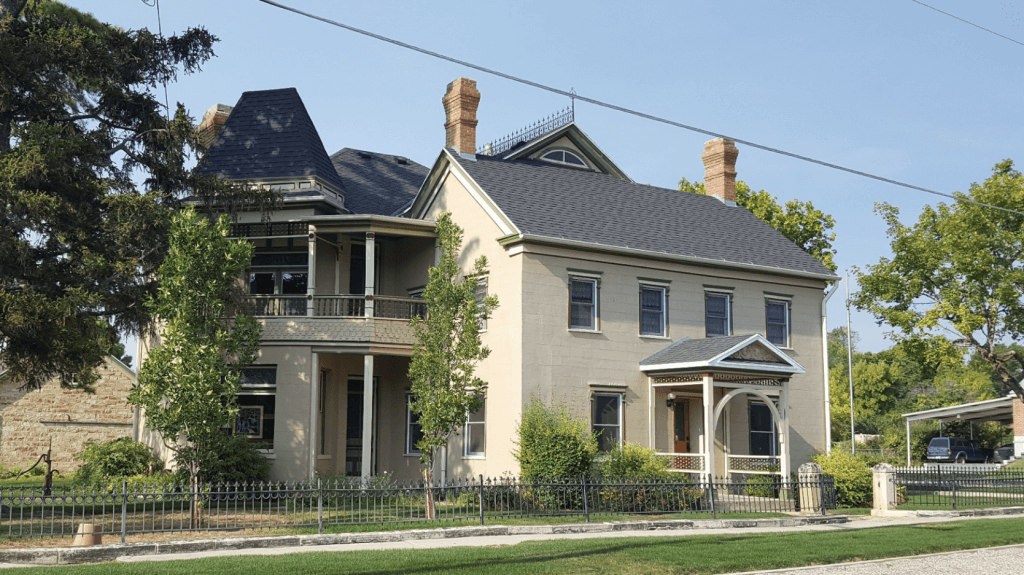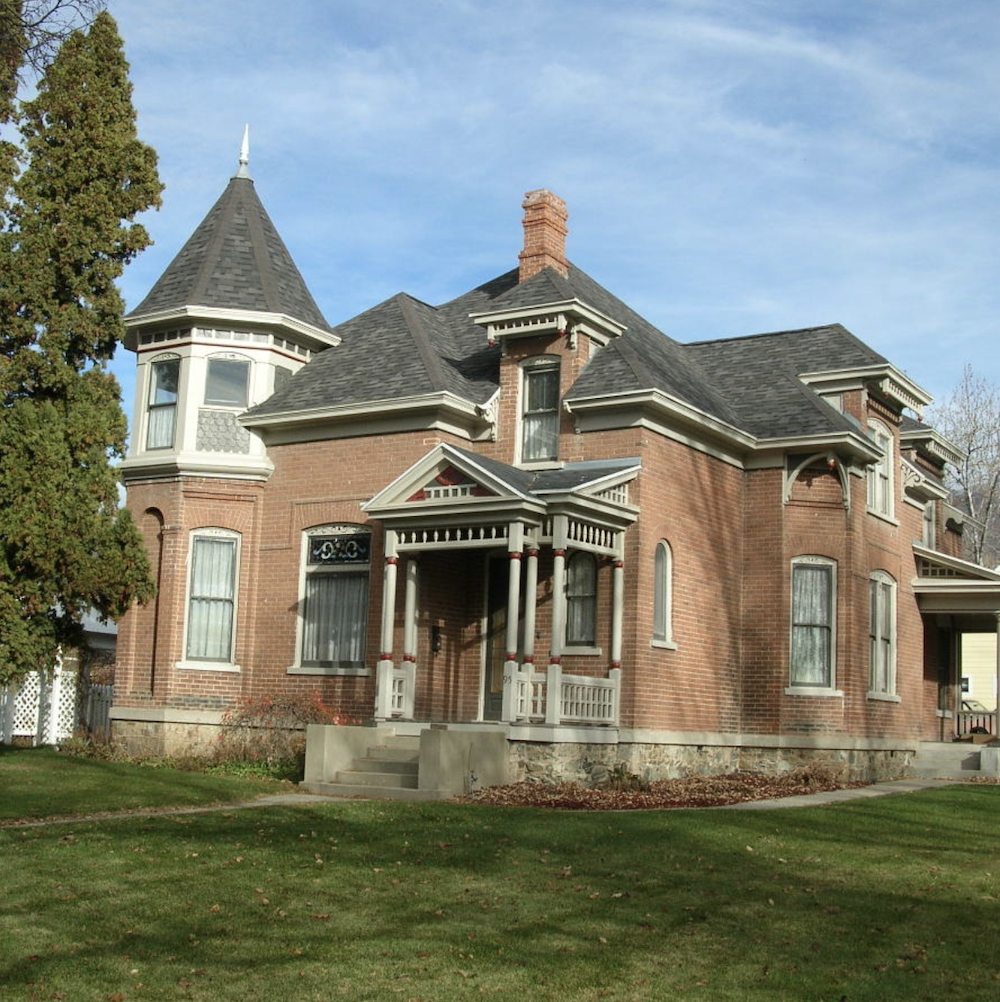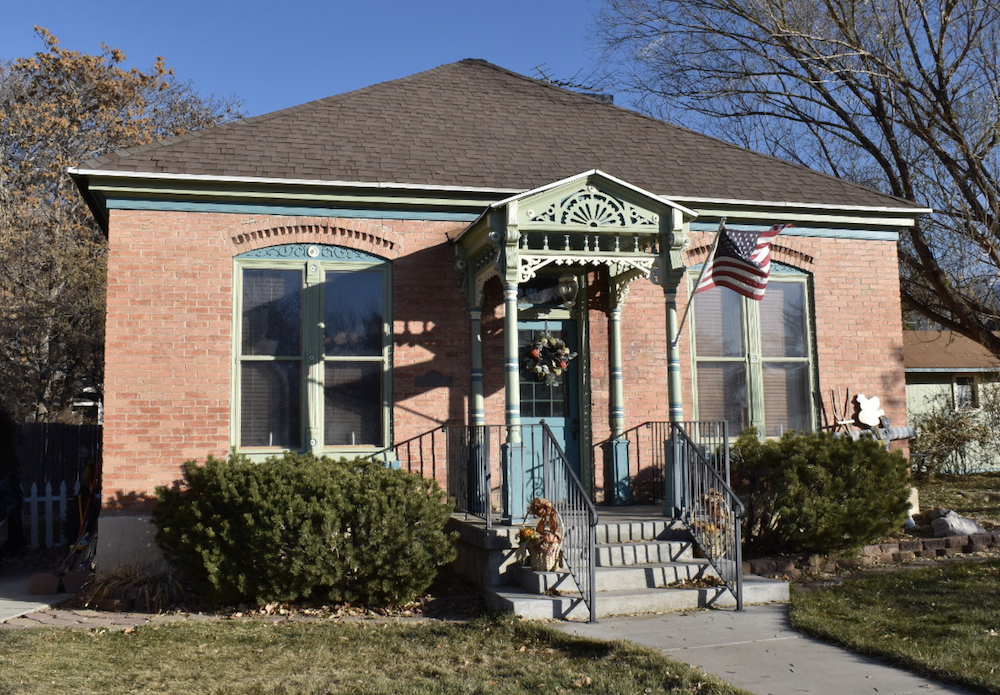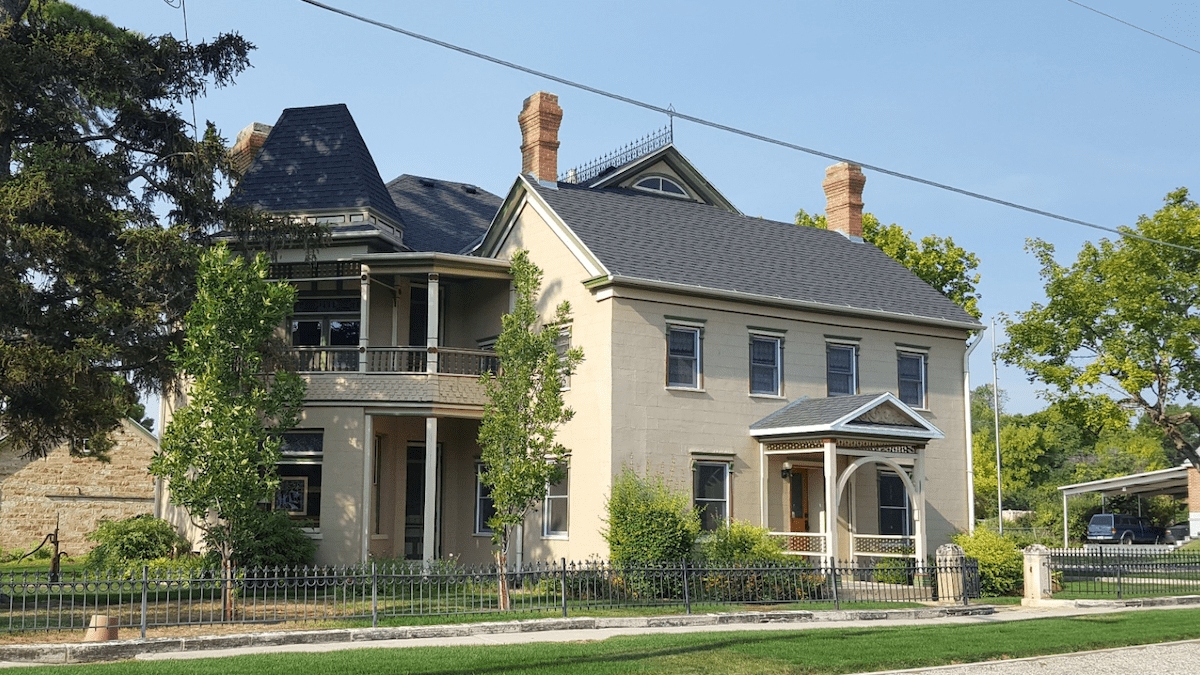By: Christopher W. Merritt, Ph.D. and Cory Jensen, Utah State Historic Preservation Office
As Utah marches through its celebration of 125 years of Statehood, the State Historic Preservation Office wants to invite you to put on your top hat and bustle and go visiting your historic neighbors! The 1890s were seen as the pinnacle of Victorian architecture and visiting one of these preserved gems can transport you back in time, to an era where indoor plumbing was novel.
Utah’s architecture is rarely a perfect example of just one style, but instead a blending and mixing of different elements. This is not a Utah tradition alone, but the 1890s Utah rural communities were becoming less isolated, and adopting trends from national and local areas. The quality of design and workmanship were affected during the Victorian era through improvements in technology. Pattern-book styles and standardized building components were now more available and easily adapted for use with local materials. The former isolation of rural areas was no longer a major hurdle that prohibited good design.

We wanted to highlight two major architectural styles in Utah, Queen Anne and Victorian Eclectic. If you look at older Utah homes, they tend to be symmetrical and plainly adorned. But by the late 19th century, new architectural styles focused on asymmetrical plans and lots of ornamentation and texture. Queen Anne style homes are the pinnacle of this new design, with multiple paint colors, extensive and decorative woodworking, and the famous turret. While Queen Anne’s started to be built in the 1870s, by the 1880s and early 1890s they were the rage of those who could afford these massive homes.
Far more common than the Queen Anne style, the Victorian Eclectic style can be seen in Utah’s towns both large and small, from massive mansions to smaller one-story homes. Building plans and elevations spread through the state by particular architects and by popular house pattern books. In time, there is little doubt that the new styles were absorbed into the vernacular tradition and were also spread by local and itinerant carpenters. This style receives its name by pulling from other styles like Queen Anne, Colonial Revival, and Neoclassical. These types of homes have bay windows, gable ends with wooden shingles, decorative woodwork, and stained glass in some examples.


As Utah entered the 20th century, these older styles began to fade from new construction, being replaced by the bungalow and other smaller, more modest cottages. But, the handful of homes built in 1896 and highlighted by our office, fall perfectly into these visually inspiring Queen Anne and Victorian Eclectic styles.
